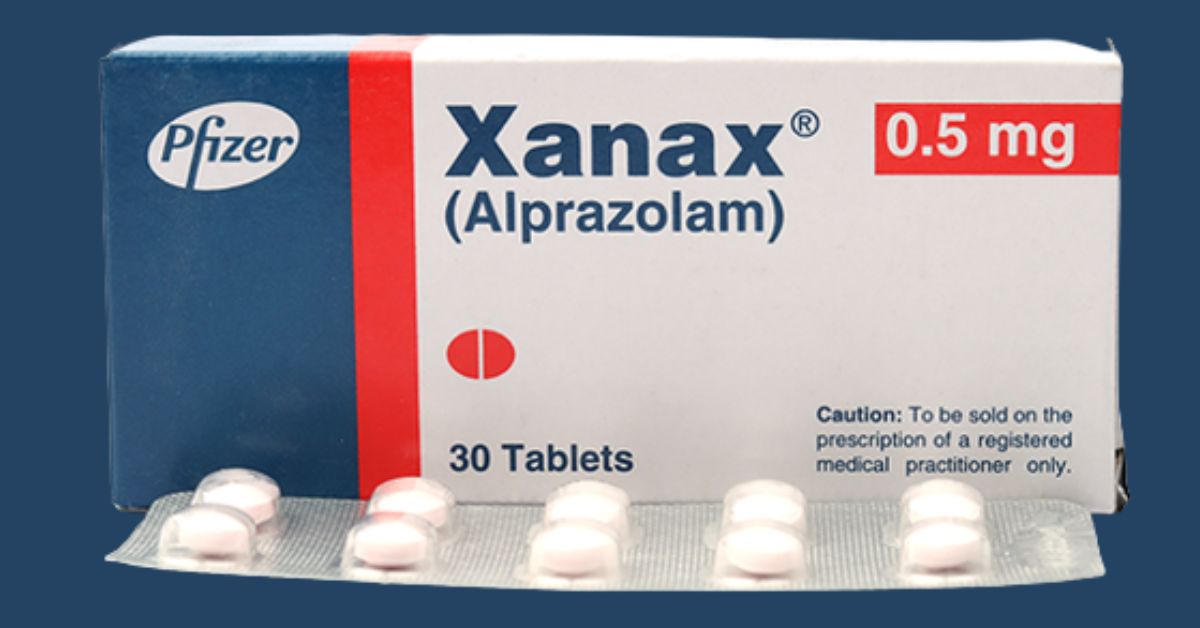Health & Fitness
Atrasolan (Alprazolam): Comprehensive Guide to Usage, Mechanism, and Safety

Atrasolan: Anxiety and panic disorders are prevalent mental health issues that affect millions of individuals worldwide. Atrasolan, commonly known by its generic name Alprazolam, is a widely used medication to combat these disorders. Alprazolam, marketed under the brand name Xanax, has become a cornerstone in the treatment of anxiety and panic disorders due to its efficacy and relatively manageable side effect profile. This article provides an in-depth look into Atrasolan, covering its mechanism of action, uses, dosage guidelines, side effects, safety measures, and its overall impact on anxiety and panic disorder treatment.
What is Atrasolan (Alprazolam)?
Overview
Atrasolan, or Alprazolam, is a benzodiazepine primarily prescribed for the management of anxiety disorders and panic disorder. Its therapeutic effects stem from its ability to enhance the activity of gamma-aminobutyric acid (GABA), a neurotransmitter that inhibits excessive neural activity in the brain. By doing so, Alprazolam produces a calming effect, alleviating symptoms of anxiety and panic.
Historical Background
Alprazolam was first introduced in the 1980s and quickly gained popularity as a treatment for anxiety and panic disorders. Its rapid onset of action and effectiveness in managing acute anxiety episodes made it a preferred choice among both physicians and patients. Over the decades, it has remained a staple in psychopharmacology, despite the emergence of newer alternatives.
Mechanism of Action
How Atrasolan Works
Alprazolam works by binding to the GABA-A receptors in the brain. GABA is the primary inhibitory neurotransmitter in the central nervous system, and its activation leads to the opening of chloride channels, resulting in neuronal hyperpolarization and reduced excitability. By enhancing GABA’s effects, Alprazolam helps to calm the nervous system, which is beneficial in reducing the symptoms of anxiety and panic disorders.
Pharmacodynamics and Pharmacokinetics
Upon oral administration, Alprazolam is rapidly absorbed from the gastrointestinal tract, reaching peak plasma concentrations within 1-2 hours. Its bioavailability is high, and it undergoes hepatic metabolism primarily via the cytochrome P450 3A4 (CYP3A4) enzyme. The drug’s half-life ranges from 11 to 16 hours, allowing for relatively sustained effects with proper dosing.
Indications and Usage
Anxiety Disorders
Atrasolan is widely used in the treatment of generalized anxiety disorder (GAD), characterized by persistent and excessive worry about various aspects of daily life. Symptoms of GAD include restlessness, fatigue, difficulty concentrating, irritability, muscle tension, and sleep disturbances. Alprazolam helps to alleviate these symptoms by promoting relaxation and reducing excessive neural activity.
Panic Disorder
Panic disorder is marked by recurrent, unexpected panic attacks that cause intense fear and physical discomfort. These attacks can include symptoms such as palpitations, sweating, trembling, shortness of breath, and a sense of impending doom. Alprazolam is particularly effective in treating panic disorder due to its fast-acting anxiolytic properties.
Off-Label Uses
In addition to its primary indications, Alprazolam is sometimes used off-label for conditions such as:
- Insomnia
- Agoraphobia
- Depression (as an adjunct therapy)
- Premenstrual syndrome (PMS)
- Alcohol withdrawal syndrome
Dosage and Administration
Standard Dosage
The standard dosage of Atrasolan varies depending on the condition being treated, the patient’s age, weight, and overall health. For anxiety disorders, the typical starting dose is 0.25 to 0.5 mg taken three times daily. For panic disorder, the dose may start at 0.5 mg three times daily and can be increased as needed, with a maximum daily dose usually not exceeding 10 mg.
Dosage Adjustments
Dosage adjustments are often necessary based on individual response and tolerance. In elderly patients or those with liver impairments, lower doses are recommended to prevent excessive sedation and other adverse effects.
Tapering Off
Due to the risk of dependence and withdrawal symptoms, it is crucial to taper off Alprazolam gradually rather than abruptly discontinuing it. This involves slowly reducing the dosage over several weeks or months under medical supervision.
Safety and Side Effects
Common Side Effects
While Alprazolam is generally well-tolerated, it can cause side effects, particularly when taken in higher doses or for extended periods. Common side effects include:
- Drowsiness
- Dizziness
- Dry mouth
- Constipation
- Fatigue
- Changes in appetite
- Cognitive impairment
Serious Side Effects
Serious side effects, though less common, may occur and require immediate medical attention. These include:
- Severe allergic reactions (rash, itching, swelling)
- Depression or suicidal thoughts
- Confusion or hallucinations
- Seizures
- Jaundice
Long-term Use and Dependence
Prolonged use of Alprazolam can lead to tolerance, dependence, and withdrawal symptoms upon cessation. To mitigate these risks, it is recommended to use the medication for short-term relief (typically no longer than 6 weeks) and to follow a carefully planned tapering schedule when discontinuing use.
Contraindications and Precautions
Who Should Avoid Atrasolan?
Atrasolan is contraindicated in individuals with a known hypersensitivity to benzodiazepines, those with acute narrow-angle glaucoma, and patients taking potent CYP3A4 inhibitors (e.g., ketoconazole, itraconazole). It should be used with caution in individuals with a history of substance abuse, severe liver impairment, or respiratory insufficiency.
Special Populations
Special precautions should be taken when prescribing Alprazolam to certain populations:
- Pregnant Women: Alprazolam is classified as a Category D medication, indicating potential risk to the fetus. It should be used during pregnancy only if the benefits outweigh the risks.
- Breastfeeding Mothers: Alprazolam can pass into breast milk and may affect the nursing infant. Alternative treatments are recommended for breastfeeding mothers.
- Elderly Patients: Due to increased sensitivity and slower metabolism, elderly patients should receive lower doses to minimize the risk of sedation and falls.
Interactions with Other Drugs
Drug-Drug Interactions
Atrasolan can interact with several other medications, leading to enhanced effects or increased risk of adverse reactions. Notable interactions include:
- CNS Depressants: Combining Alprazolam with other CNS depressants (e.g., alcohol, opioids, antihistamines) can potentiate sedation and respiratory depression.
- CYP3A4 Inhibitors: Drugs that inhibit CYP3A4 (e.g., certain antifungals, antibiotics, and HIV protease inhibitors) can increase Alprazolam levels, raising the risk of toxicity.
- CYP3A4 Inducers: Inducers of CYP3A4 (e.g., rifampin, carbamazepine) can decrease Alprazolam levels, reducing its efficacy.
Drug-Food Interactions
Grapefruit and grapefruit juice can inhibit CYP3A4 metabolism of Alprazolam, leading to increased plasma levels and heightened effects. It is advisable to avoid grapefruit products while taking this medication.
Xanax vs. Other Anxiety Medications
Benzodiazepines Comparison
Compared to other benzodiazepines, Alprazolam has a relatively rapid onset and short to intermediate duration of action. This makes it particularly effective for acute anxiety episodes but also increases the potential for abuse and dependence compared to longer-acting benzodiazepines like diazepam (Valium) or clonazepam (Klonopin).
Non-Benzodiazepine Alternatives
Several non-benzodiazepine medications are also used to treat anxiety and panic disorders, including:
- Selective Serotonin Reuptake Inhibitors (SSRIs): Medications like sertraline (Zoloft) and fluoxetine (Prozac) are often prescribed for long-term management of anxiety disorders.
- Serotonin-Norepinephrine Reuptake Inhibitors (SNRIs): Venlafaxine (Effexor) and duloxetine (Cymbalta) are effective for both anxiety and depression.
- Buspirone: A non-benzodiazepine anxiolytic that is less sedating and has a lower risk of dependence.
- Beta-Blockers: Propranolol and other beta-blockers can help manage physical symptoms of anxiety, such as tachycardia and tremors.
Advantages and Disadvantages
Advantages of Xanax:
- Rapid onset of action
- Effective for acute anxiety and panic attacks
- Well-established efficacy and safety profile
Disadvantages of Xanax:
- Potential for abuse and dependence
- Risk of withdrawal symptoms
- Sedation and cognitive impairment
Clinical Studies and Efficacy
Research Evidence
Numerous clinical trials have demonstrated the efficacy of Alprazolam in the treatment of anxiety and panic disorders. Studies have shown that it significantly reduces the frequency and severity of panic attacks and improves overall anxiety symptoms. Its effectiveness is comparable to other benzodiazepines and superior to placebo.
Real-World Data
Real-world data supports the clinical trial findings, with many patients reporting substantial improvement in their anxiety and panic symptoms. However, long-term data also highlights the challenges of dependence and the importance of careful monitoring and management.
Patient and Physician Perspectives
Patient Experiences
Patients generally report positive experiences with Atrasolan, particularly appreciating its rapid relief from anxiety and panic symptoms. However, some patients express concerns about side effects, dependence, and withdrawal difficulties.
Physician Insights
Physicians recognize the value of Alprazolam as a treatment option but emphasize the need for judicious prescribing. They advocate for using the lowest effective dose for the shortest duration possible and incorporating non-pharmacological interventions such as cognitive-behavioral therapy (CBT).
Conclusion
Atrasolan (Alprazolam) remains a highly effective medication for the treatment of anxiety and panic disorders. Its rapid onset and potent anxiolytic effects make it a valuable tool for managing acute episodes. However, the potential for dependence and withdrawal necessitates careful use and adherence to prescribed guidelines. By understanding its mechanism, proper usage, and safety considerations, both patients and healthcare providers can maximize the benefits of Atrasolan while minimizing risks.
References
To ensure a comprehensive understanding of Atrasolan and its role in treating anxiety and panic disorders, readers are encouraged to refer to authoritative sources such as:
- Peer-reviewed journals on psychopharmacology
- Clinical practice guidelines from organizations like the American Psychiatric Association (APA)
- Patient education resources from reputable health organizations
- National Library of medicine on Alprazolam.
By staying informed and proactive, patients and healthcare providers can work together to achieve the best possible outcomes in managing anxiety and panic disorders with Atrasolan (Alprazolam).
Vist Also: Haap
Disclaimer: This article is for informational purposes only and does not constitute medical advice. Consult a healthcare professional before starting or changing any medication regimen. The information provided is based on current knowledge and may not apply to individual cases. Always follow your doctor’s recommendations.

-

 Entertainment6 months ago
Entertainment6 months agoBaddieHub: Transforming the Landscape of Digital Empowerment
-

 Health & Fitness4 months ago
Health & Fitness4 months agoThe //vital-mag.net blog The Complete Resource for Health
-

 Review8 months ago
Review8 months agoεμφανιση σβισμενον φωτογραφιων: Restoring Deleted Photos Made Easy
-

 Review7 months ago
Review7 months agoGet in Touch with TurboGeekOrg: Maximizing Your Experience on the Ultimate Tech Platform














Pingback: Dr Aaron Wohl Arrested: A Shocking Turn of Events in Fort Myers